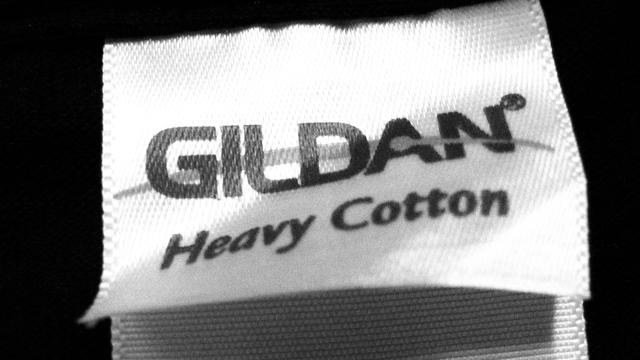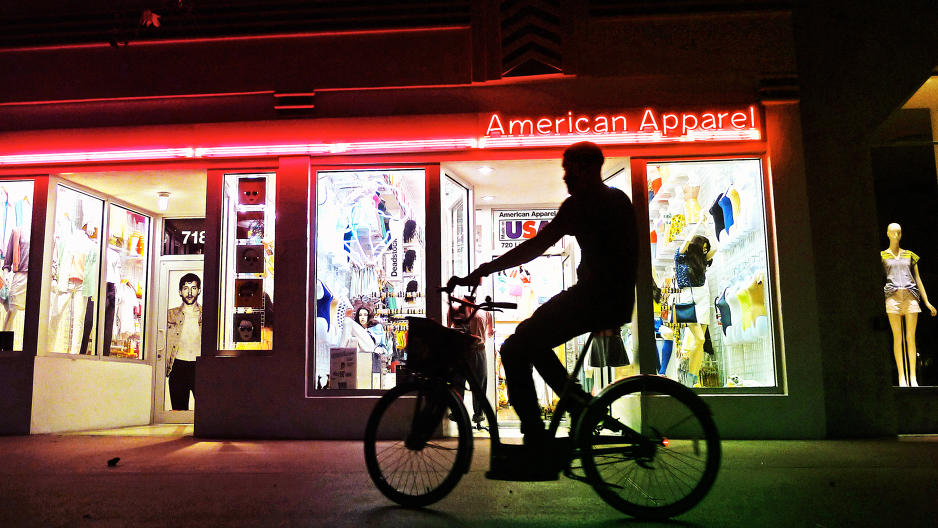How To Make A T-Shirt In Trump’s Anti-Trade America
(November 28, 2016), American Apparel filed for bankruptcy for the second time in 13 months. After a failed search for a buyer, the company is now being sold for parts. The only deal it has in hand is with Gildan Activewear Inc., a publicly traded Canadian company that makes T-shirts and other cotton staples in factories primarily located in Central America and the Caribbean Basin. Gildan, which has purchased a spate of other basics companies over the last few years, has offered $66 million for American Apparel’s intellectual property, some of its wholesale inventory, and an option on manufacturing and distribution assets.
Interestingly, Gildan has made it clear in its statement to the press that it “will not be purchasing any retail store assets.” In other words, Gildan is not interested in taking advantage of American Apparel’s network of stores around the world, nor its enviable brand recognition among consumers. It is far more concerned about taking over its Los Angeles factories and operations.
Gildan’s negotiations with American Apparel happened before the results of the election were announced last Tuesday, so it is impossible to say whether the political climate influenced the company’s decision-making. The company did not respond to our request for comment.
But its effort to build the infrastructure in the United States should prove particularly valuable if Donald Trump follows through on his campaign promises with regards to trade. Trump has vowed to renegotiate the terms of the NAFTA agreement (or withdraw completely if the other nations don’t comply with his terms) and abandon the Trans-Pacific Partnership.
Granted, it may not be easy to follow through on these policies, since they will have to be approved by Congress, but they are on the table now. And clothing brands interested in selling products to the U.S. market will need to begin thinking about domestic manufacturing strategies in this new environment.
“This acquisition of American Apparel is kind of like the perfect Nirvana for them,” says Marshal Cohen, NPD Group’s chief industry analyst for retail.
An Under-The-Radar Brand
To understand Gildan’s reasons for purchasing American Apparel, it helps to understand the company’s history. Gildan is not necessarily a brand whose name you will recognize, but there’s a good chance you’ve worn one of its T-shirts. The Montreal-based company was founded in 1984 by Glenn and Greg Chamandy, who purchased a mill in Canada to made basic cotton products, like T-shirts and sweatshirts, then resell them across North America to be screen-printed with designs.

You may, at some point, have purchased a T-shirt with your favorite band or sports team’s logo emblazoned on it that had a Gildan tag attached. It’s also entirely possible that you bought a Gildan product without even knowing it, since the company licenses products for brands like Under Armour and New Balance. The company has grown to be a major player in basic apparel business, with more than 48,000 employees worldwide. And it is on an upward trajectory: Last year it generated $2.6 billion in revenue, up by 11.7% over the year before. That translates to millions of T-shirts.
Since plain T-shirts are a commodity, Gildan has to offer them at very low prices to stay competitive. As the company grew, it had to move overseas where labor costs were cheaper. In 1998, it first moved to Honduras, then to Mexico, Haiti, and Nicaragua, according to a report by an Asian manufacturing association tracking Gildan’s movements during this time. That report included an interview with Glenn Chamandy, who remains the CEO.
“This is all about cost of supply,” Cohen says. “They could lose a multimillion-dollar deal just for a nickel [per T-shirt]. They had to be the people who were building the product at the lowest-cost supplier.”
It’s also interesting to note that Gildan choose to take a decentralized manufacturing strategy, rather than pursuing the more obvious path of making all of its products in China. This is what the vast majority of fashion and apparel companies have done since 2001, when China joined the World Trade Organization. But the aforementioned report says that Chamandy was paying close attention to bilateral and regional trade agreements and specifically partnered with factories in countries where it would be able to ship duty-free to North America, Europe, and Australia. Having factories close to the U.S., Gildan’s biggest market, was also valuable, since it meant it could fulfill orders quicker than counterparts that would have to ship products from China.
By being savvy about import and export tariffs, and also building high-tech factories in the countries it where it did choose to manufacture, it was able to make T-shirts that were on par with those made in China, even though it was paying more for labor costs.
But even though Gildan paid slightly more for labor doesn’t mean that workers were treated particularly well. Worker Rights Consortium, an independent labor rights monitoring organization, found in 2011 that workers in Haitian factories where Gildan was manufacturing products were being unlawfully terminated. In 2013, the same organization found that Gildan’s workers earnings “fall significantly short of the minimum wage” primarily because the company imposed an unrealistically high production quota on them.
Doing The Right Thing?
To be fair, Gildan has also tried to invest in corporate social responsibility efforts. Last month, it donated $50,000 to assist with the relief efforts in Haiti following Hurricane Matthew. It has also created a five-year plan to reduce its environmental footprint, by using renewable resources and reducing water consumption.
And perhaps more compellingly, as part of its larger strategy to have diverse manufacturing operations, the company has also invested heavily in bringing production to the United States, where there are stronger laws protecting workers. Since 2000, it has invested more than $400 million in yarn spinning facilities in North Carolina and Georgia, and hires 2,600 full time employees in the U.S., who earn an average of $32,270 plus benefits annually. This is still only 5% of its total workforce, but it reveals the company is interested in finding ways to make products closer to home.

This is perhaps why Gildan’s top dogs were paying attention when American Apparel filed for bankruptcy. It can already buy cotton and spin it into yarn in the U.S., but American Apparel offers an infrastructure to cut and sew products locally. It also means inheriting the company’s institutional knowledge about how best to organize a factory in the U.S., how to hire and teach sewers, and what machines might streamline the process. With the American Apparel acquisition, it will soon be possible for Gildan to manufacture an entirely American-made cotton product.
Gildan and American Apparel are, in many ways, very different companies. Gildan’s manufacturing strategies appear to be largely pragmatic: By operating factories in many countries, it spread out its risk and could be agile when there were changes in trade regulations. American Apparel, for its part, was motivated be ethics: For all the sins of its founder Dov Charney, who preferred pornographic advertising and harassed workers, he was singularly focused on creating sweatshop-free clothing that consumers would feel happy about wearing. But in Trump’s America, these differences might become moot. Apparel companies that want to sell to the U.S. market will have to figure out how to make their products here.
“There’s going to be a supply chain shift,” Cohen says. “I doubt we will ever be able to get the price of a T-shirt made here to be as low as it would be made elsewhere. But as more and more domestic production gets rewarded through, say, tax benefits, there may be reasons to have a greater percentage of the business produced in the U.S.”
They might take a page from Gildan’s playbook. This would mean leaning into companies that already have expertise in local manufacturing, equipping factories with state-of-the-art technology to make them more efficient (which will drive down the cost per item), and having a diverse range of manufacturing channels to be flexible should regulations change at the drop of a hat.
related video: Your Cotton Bedsheets Harbor A Nightmarish Secret
Fast Company , Read Full Story
(10)














